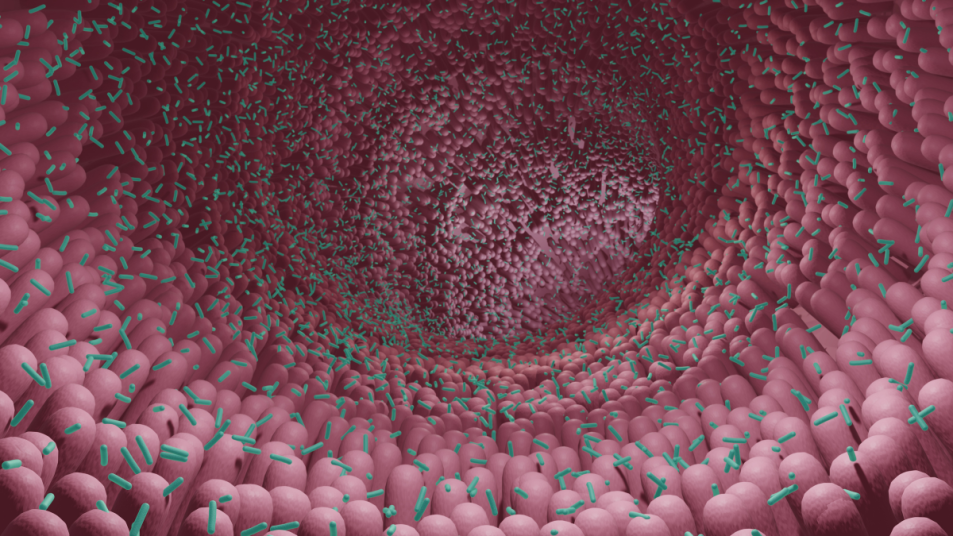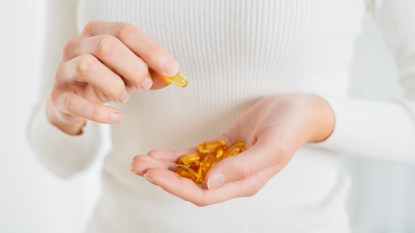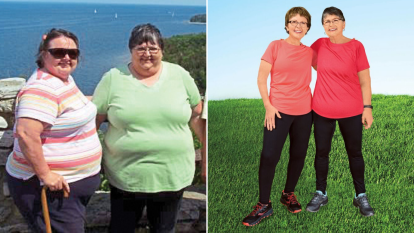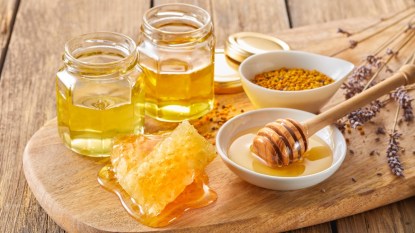Is Bad Bacteria Building in Your Gut? Why It Causes Bloat and Brain Fog, and How To Fix It
Make homemade yogurt your best friend.

Bloated, foggy, and blue? SIBO (small intestinal bacterial overgrowth) may be to blame. William Davis, MD, author of Super Gut, says, “SIBO occurs when bacteria that belong in the colon overgrow and spread to the small intestine. There, they produce toxins that leak into the bloodstream and cause abdominal pain and distention [abnormal swelling], brain fog, depression, and weight gain.”
Unfortunately, SIBO is more common than you may think, and it’s under-diagnosed, according to Time. The reason? This condition isn’t well known just yet, and it causes symptoms that could be attributed to a wide range of diseases — such as bloating, constipation, diarrhea, brain fog, and depression. In addition, Time notes that it may be the primary cause of irritable bowel syndrome (IBS). So, it’s important to get it under control, stat. If you believe you have SIBO, speak to your doctor about getting tested and how you can treat it. In the meantime, the following tips may help nix overgrowth and reduce your symptoms.
1) Make good-gut bacteria at home.
Replenishing levels of good gut bacteria is key to resolving SIBO. But most probiotic products don’t contain the strains and amounts of bacteria that speed healing. What can? A homemade yogurt that includes specific gut-friendly strains and is fermented for 36 hours. “That means its levels of beneficial bacteria are 1,000-fold higher than conventional store-bought yogurts,” notes Dr. Davis, who recommends eating ½ cup of the creamy treat daily for four weeks.
2) Enjoy extra-virgin olive oil.
Dr. Davis recommends using extra-virgin olive oil (EVOO) in salad dressings and drizzling it over veggies, pizza, and even scrambled eggs. Why does this help SIBO? The body converts oleic acid found in the oil to oleoylethanolamide (OEA), a unique substance that enhances the strength of the gut lining. As an added bonus, 2014 research published in the PNAS Journal notes that OAE has appetite-suppressing effects.
3) Avoid high-sugar foods and these fake sweeteners.
Sugary fare is a top SIBO trigger, because bad bacteria feeds on it. Indeed, in a study from 2016, researchers found that high-carb, high-sugar, and low-fiber diets were linked to a higher risk of SIBO. But Dr. Davis says artificial sweeteners can also cause bacterial imbalances that set SIBO in motion. His advice: Use monk fruit, which contains mogrosides that tame inflammation. Also smart: avoiding grains such as wheat, corn, barley, and rye when possible. Dr. Davis believes they can fuel overgrowth since they break down into sugar during digestion.
4) Add curcumin to your diet.
Anti-inflammatory compounds in curcumin, the plant molecule that gives turmeric spice its vivid hue, may help the small intestine heal. Plus, these compounds have an anti-fungal action. That’s key, since SIBO is often accompanied by small intestinal fungal overgrowth (SIFO) that worsens symptoms. Dr. Davis advises starting with 300 milligrams of curcumin daily and doubling the dose over the course of a week. Then supplement at that level for four to six weeks.
Tip: Choose a product that is not formulated to enhance absorption. To be effective against SIBO, curcumin must remain in the GI tract for as long as possible. One to try: Thompson Turmeric Curcumin, 300 milligrams (Buy from iHerb, $16.99).
Dr. Davis’ Creamy Super Gut SIBO Yogurt Recipe
Want to make your own yogurt at home? Try Dr. Davis’ recipe. Here’s what you’ll need:
- 10 tablets Lactobacillus reuteri strains DSM 17938 and ATCC PTA 6475 (Try: BioGaia Gastrus Probiotic, $24.47)
- 1 capsule Lactobacillus gasseri strain BNR17 (Try: Dr. Mercola Biothin Probiotic, $28.97)
- 1 capsule Bacillus coagulans strain GBI-30,6086 (Try: Schiff Digestive Advantage Daily Probiotic, $24.41)
- 2 tablespoons raw potato starch (Try: Bob’s Red Mill Potato Starch, $9.43)
- 1 quart organic half-and-half
Here are the instructions:
- Crush all 10 tablets of BioGaia Gastrus using a mortar and pestle or the back of a spoon. Add to medium-sized bowl.
- Add the contents of the capsules of the other probiotics and mix with 2 tablespoons half-and-half. Stir to remove clumps. Mix in remaining half-and-half.
- Pour the mixture into three mason jars or the containers that come with a yogurt maker. Cover lightly with cheesecloth or plastic wrap. Set in a yogurt maker or an Instant Pot that allows the setting of temperature or a water bath heated with a sous vide device. Ferment at 106 degrees Fahrenheit for 36 hours.
- For subsequent batches, use 2 tablespoons of curds or whey from first batch in place of probiotics and combine with half-and-half.
This content is not a substitute for professional medical advice or diagnosis. Always consult your physician before pursuing any treatment plan.
A version of this article originally appeared in our print magazine, Woman’s World.













